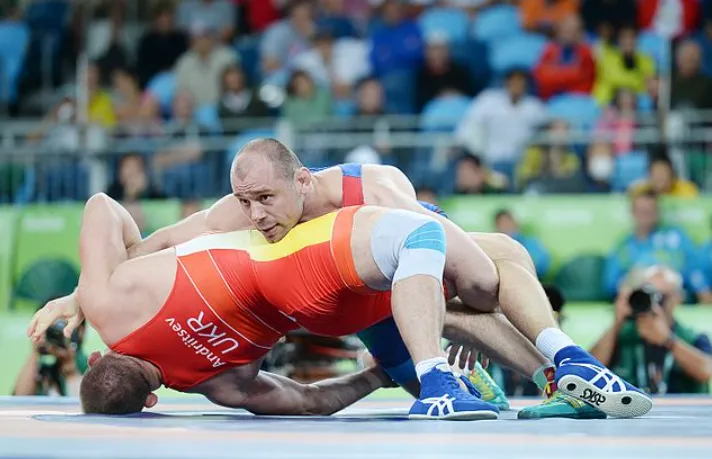Wrestling is one of the oldest and most revered sports in history. From its roots in ancient Greece and Rome, where it was a key Olympic event, to its current status as a thrilling competitive sport, wrestling has evolved significantly. Adapted by various cultures, each with unique techniques and styles, wrestling is now celebrated worldwide. From amateur levels in schools and local clubs to professional and Olympic competitions, it showcases a blend of strength, strategy, and resilience.
Contents
Ancient Wrestling Civilizations
Roots in Sumeria
The earliest records of wrestling can be traced back to ancient Sumeria, around 3000 BCE. Inscriptions and artifacts depicting wrestling holds have been discovered in Sumerian ruins, indicating that this sport was not only practiced but also celebrated in early Mesopotamian society. Wrestling was often associated with rituals and religious ceremonies, underscoring its cultural significance.
Egyptian Prowess
In ancient Egypt, wrestling was both a popular sport and a form of military training. Hieroglyphs and tomb paintings illustrate various wrestling techniques, suggesting that the Egyptians had a sophisticated understanding of the sport. Wrestling matches were often held during festivals, attracting large crowds and royal patronage.
Greek Innovations
Ancient Greece is perhaps the most well-known early civilization to have embraced wrestling. Considered both a sport and an educational tool, wrestling was a staple of Greek culture. It was featured prominently in the ancient Olympic Games, where athletes competed with a blend of skill, strength, and strategy. The Greeks developed several wrestling styles, including pankration, which combined grappling and striking techniques.
Medieval and Renaissance Era
Wrestling in the Middle Ages
During the Middle Ages, wrestling maintained its popularity across Europe. It was often featured in fairs and festivals, serving as entertainment for the masses. Wrestling during this period was less formalized but still held cultural significance. Knights and soldiers practiced wrestling to enhance their combat skills, making it an essential part of medieval martial training.
Renaissance Resurgence
The Renaissance period saw a renewed interest in classical sports, including wrestling. Manuals and treatises were published, outlining various wrestling techniques and strategies. Wrestling schools began to emerge, providing formal training to aspiring wrestlers. This era marked the beginning of wrestling as a more regulated and codified sport.
Cultural Integration
Wrestling also began to integrate various regional styles during the Renaissance. Techniques from different parts of Europe were combined, leading to a richer and more diverse wrestling culture. This period laid the groundwork for the development of modern wrestling styles.
The Birth of Modern Wrestling
19th Century Developments
The 19th century was a pivotal period for wrestling. The sport began to evolve into its modern form, with the introduction of organized competitions and standardized rules. Catch wrestling, a style that originated in Lancashire, England, became particularly popular. It combined submission holds with traditional grappling techniques, influencing many modern wrestling styles.
20th Century Innovations
The 20th century saw the emergence of freestyle and Greco-Roman wrestling, both of which are now staples in amateur wrestling competitions. Freestyle wrestling allows the use of legs in both offense and defense, while Greco-Roman wrestling restricts holds to the upper body. These styles were formalized with specific rules, making wrestling more accessible and competitive.
Professional Wrestling
Professional wrestling also gained immense popularity during the 20th century. Unlike amateur wrestling, professional wrestling often incorporates theatrical elements, creating a unique blend of sport and entertainment. Promotions like WWE (World Wrestling Entertainment) have turned wrestling into a global phenomenon, attracting millions of fans worldwide.
The Influence of Global Wrestling Styles
Sumo Wrestling in Japan
Sumo wrestling, a traditional Japanese sport, has a history spanning over a thousand years. It involves two wrestlers attempting to push each other out of a circular ring or force any part of their opponent’s body (other than the soles of their feet) to touch the ground. Sumo wrestling is deeply rooted in Shinto rituals and is characterized by its distinct ceremonial aspects.
Freestyle and Greco-Roman Wrestling
Freestyle and Greco-Roman wrestling are prominent in international competitions, including the Olympic Games. These styles emphasize different techniques and strategies, offering a diverse range of challenges for wrestlers. The global appeal of these styles has led to a rich exchange of techniques and innovations among wrestlers from various cultures.
Lucha Libre in Mexico
Lucha Libre, or Mexican professional wrestling, is known for its colorful masks, high-flying maneuvers, and acrobatic style. It has a unique cultural significance in Mexico, where wrestlers, known as “luchadores,” are often seen as folk heroes. Lucha Libre has influenced wrestling styles worldwide, adding an element of spectacle and excitement to the sport.
The Olympic Journey
Ancient Olympics
Wrestling has been a part of the Olympic Games since its inception in ancient Greece. It was one of the original sports in the ancient Olympics, showcasing the physical prowess and strategic acumen of the participants. Wrestling events were highly anticipated, drawing large crowds and intense competition.
Modern Olympic Revival
When the modern Olympic Games were revived in 1896, wrestling was included as one of the core sports. Both freestyle and Greco-Roman wrestling have been featured in the Olympics, with athletes from around the world competing for glory. The inclusion of women’s wrestling in the 2004 Olympics marked a significant milestone, promoting gender equality in the sport.
Future Prospects
The future of wrestling in the Olympics looks promising. Efforts are being made to ensure the sport remains relevant and exciting for new generations. Innovations in rules, techniques, and training methods continue to evolve, keeping wrestling at the forefront of international competition.
Advancements in Wrestling Protective Wear
Early Protective Gear
In the early days of wrestling, protective gear was minimal. Wrestlers relied primarily on their skill and strength, with little consideration for safety. However, as the sport evolved, the need for protective gear became apparent.
Modern Innovations
Today, wrestling protective wear has advanced significantly. Headgear, knee pads, and wrestling mouthguards are standard equipment, designed to prevent injuries and enhance performance. Technological advancements have led to the development of lightweight, durable materials that provide superior protection without compromising mobility.
Impact on Performance
The use of protective gear has had a positive impact on wrestling performance. Athletes can train and compete with greater confidence, knowing they are less likely to sustain injuries. This has led to higher levels of skill and competitiveness in the sport, contributing to its ongoing evolution.
Conclusion
Now that you’ve got a better grasp of wrestling’s history and evolution, you can appreciate its cultural significance and global appeal. From ancient Greece to today’s competitions, wrestling has stood the test of time, constantly adapting and evolving. Wrestling will keep captivating audiences for generations, keep watching and dive into the dynamic and exciting world of wrestling!









